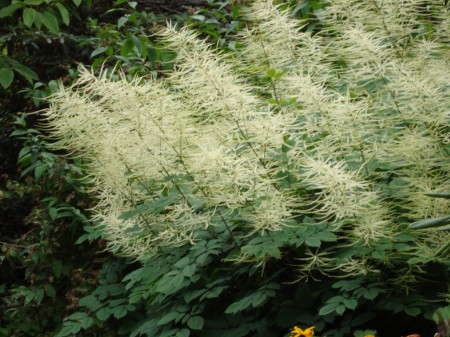Nutrient-Rich Adzuki Bean Soup Is Entirely Gluten Free and Vegetarian.
This is my own recipe for gluten-free vegetarian broth which I have found is an excellent sustaining food, being rich in protein and healthy carbohydrates. It is a great protein food, and is an excellent source of important minerals and vitamins. It has just about the whole range – iron, potassium, iodine, magnesium, manganese, traces of the other minerals, depending on where the vegetables were grown, and where the kelp was sourced. It is also very high in Vitamins, especially beta-carotene, the essential ingredient which the body uses to make Vitamin A. Vitamin A helps protect the immune system, helps fight off infections, and is important for the health of just about everything in the body, including skin, hair, nails, bones and the nervous system.
This broth makes a great meal, perhaps in combination with some gluten-free cornbread, or rice, or raw or stewed fruit, or salad to follow. You can also use this gluten-free broth as part of your cleansing programme, and to help you on the road to losing weight, and that unwanted fat.
It can either be used for several days as a mono-diet, to help detoxify the body, or in combination with raw salads. If you were to have a bowl of this soup three times a day, wih a salad afterwards, and ate raw foods the rest of the day whenever you were hungry, your body should reward you.
How To Make Adzuki Bean Soup – Protein Rich, Vegetarian and Gluten-Free.
Take 2 cups of dry brown adzuki beans. You could use dry green mung beans if these are not available, but I like the brown adzuki beans for this soup.
Put these into a large saucepan, large enough to hold a couple of litres.
Cover with one litre of water.
Now chop up one large onion. Add this to the adzuki bean pot.
Chop up two medium sized carrots and add these also.
Chop up one large potato, or a couple of medium sized ones, into walnut sized pieces. Unless the potato has started to sprout, or is green, leave the skin on the potato. Potato skin is a rich source of potassium, Vitamin A and other nutrients, but it is no good to use the skin if the potato is green or sprouting, as the solanum in green potato skin is slightly poisonous and will make your soup taste bitter.
Bring the pot to the boil, then turn down to the lowest heat so that the soup mixture is just simmering.
Leave to simmer gently for two hours with a lid lightly over the pot to keep the steam in.
After two hours, take off the heat and allow to cool. Then blend up the soup in your blender. Put back into the pot and add another half litre of water. Bring to the boil again, then turn the heat off.
At this stage, just before serving, chop two or three organic tomatoes into the soup. Add 1 teaspoon sea salt or kelp to taste, and a few dashes of sweet, red, powdered paprika pepper.
Pick two nice young silver beet leaves from your garden and, using only the green part of the silver beet, chop it very finely. Chop a little freshly picked parsley and coriander, if you have it. If not, it does not matter, as the soup will still taste good. It is important to have some fresh green leaves in the soup though. You could use some celery tops and some Chinese cabbage such as bok soy, or spinach, instead of the silver beet. Tip the silver beet and herbs into your soup pot.
These greens should be chopped nice and fine. Do not cook the soup any more once the tomatoes and chopped greens have been added. They will wilt nicely in the soup, but because they are not directly exposed to stove heat, will still contain many of their nutrients.
Serve immediately. Of course, any remaining soup can be let to cool and then stored in the refrigerator for a day or two, but fresh is always best. Try to use the soup up on the day that you make it.



